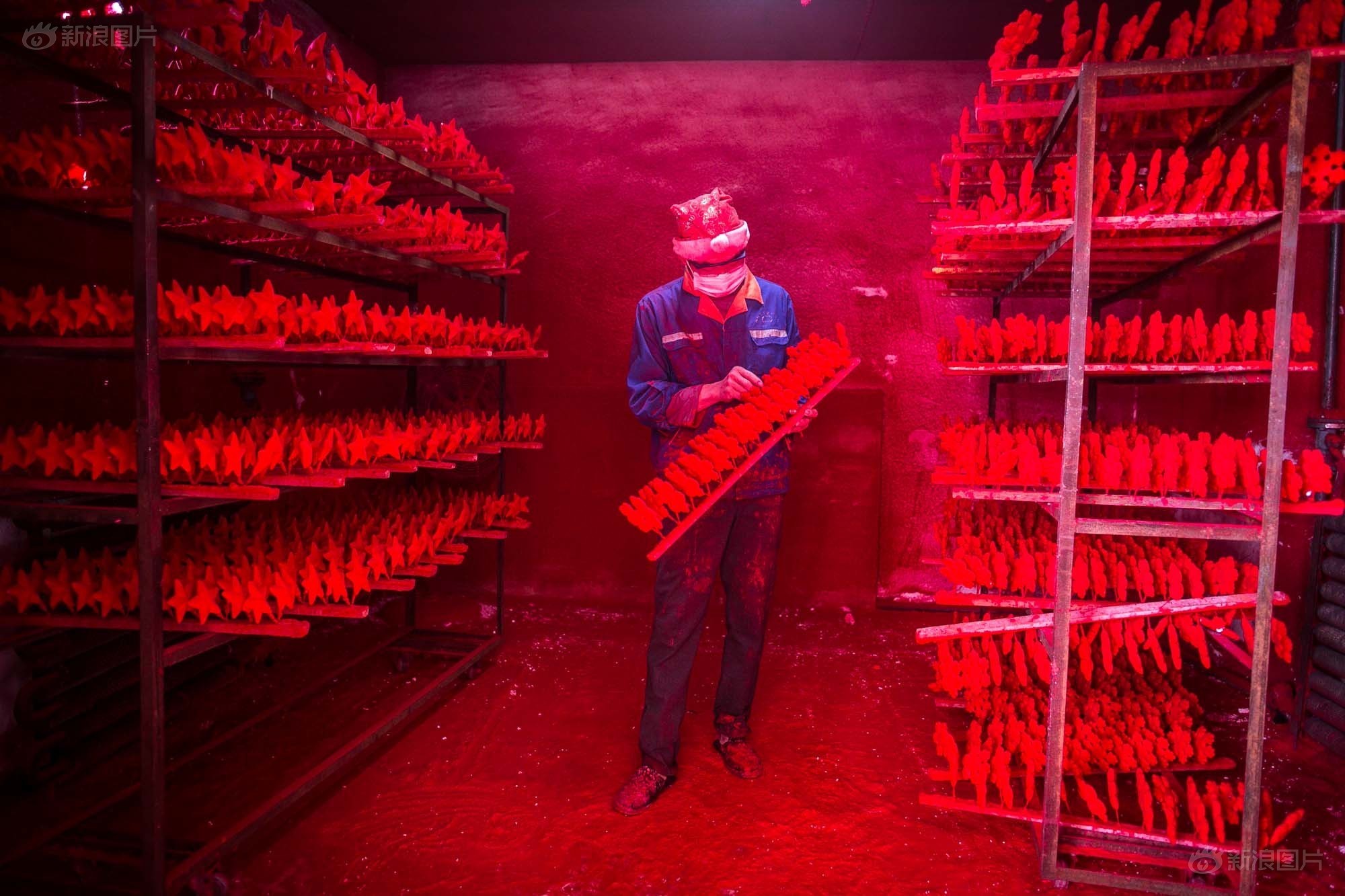China Chronicles is when we have a look back at 5,000 years of Chinese history - and pick out something pertinent...
An exact 1:1 scale model of Beijing's Old Summer Palace, known in Chinese by its original name Yuanming Yuan (the "Garden of Perfect Brightness") has just been erected in Hengdian, Zhejiang Province. The replica has been met with controversy online and condemnation from managers of the ruins of the original. Detractors of the project insist that the palace is a place of national humiliation and patriotic education, not entertainment or profit-making. So what is this site that occupies such a solemn and painful place in the national psyche? Time to take a trip back to 1860, to the dramatic and fiery end to the Second Opium War...
In the north-west of Beijing, a swathe of shattered marble lies amongst a vast and windswept expanse of parkland. Protruding from earth dampened by the confluence of encircling lakes, a scarce and solemn procession of decorative columns is all that remains of the Old Summer Palace. Few UNESCO World Heritage sites, one might think, could be so underwhelming. Yet these scant ruins are, in the modern Chinese consciousness, of truly monumental importance.

Yuanming Yuan as it stands today
The plaques dotted around the site offer us clues to its meaning: after describing in evocative terms what once stood where today but a concrete altar postulates, they continually remind visitors that it was 'the Anglo-French forces' who are to be held accountable for the decimation of this once-magnificent structure, eulogised in its day as 'the garden of gardens' and 'the Versailles of the east.' Indeed, what the men of the ubiquitous Anglo-French forces discovered there in 1860 and set alight was an ornate palace truly deserving of the epithet Yuanming Yuan—the Garden of Perfect Brightness. The British hero of empire Charles 'Chinese' Gordon, wrote: "You can scarcely imagine the beauty and the magnificence of the places we burnt... it made one's heart sore to burn them."
Since its construction began in 1707, Yuanming Yuan had been the effective center of power for the emperors of the Qing dynasty, who wished, as the Kangxi Emperor said, to escape "the noises and to administrate affairs." The palace layout was dominated by exotic foreign structures designed by Jesuit priests residing in China such as Michel Benoist and Giuseppe Castiglione, whom the famously curious and creative Qianlong Emperor had commissioned to build vernacular Western-style fountains and Italianate buildings in 1747.
It was from here that the Xianfeng Emperor conducted the Second Opium War—and it was from here that he fled on September 29, 1860 as British and French forces advanced to Beijing to force the emperor to recognize the terms of the Treaty of Tianjin, signed two years earlier. When Lord Elgin seized the imperial residence and found that the emperor had abandoned Beijing, leaving no court with which to negotiate, he was presented with a immediate dilemma. It was entirely possible to replace the feeble Manchu dynasty with a Chinese one, or to take control of China as the British had done in India.
Instead, they resolved to prop up the failing dynasty and concentrate on advantageous trade terms. Still, Elgin might have destroyed the Forbidden City and set Beijing ablaze as some diplomats suggested; but this, too, he declined, insisting that they must punish the emperor alone and not the innocents of Beijing. He decided to spare the capital and instead destroy the "elegant folly" that lay before him, what he and other regarded at the time as the semi-foreign and faintly ridiculous pleasure gardens of a megalomaniac. The French envoy attached to Elgin was determined to exact revenge on the people of Beijing, suggesting that '[t]he total destruction of the Peking palaces, after removing the archives... would be a far more expiatory act than the burning of the mere “maison de plaisance.”'
Nonetheless, Elgin's actions achieved their intended goals: within a few days a peace treaty was signed, after a good deal of destruction and looting but no further loss of life. Stanley Lane-Poole wrote in his biography of Sir Harry Parkes that, "from an artistic point of view it was an act of vandalism; from that of sound policy it was statesmanlike."

The looting of Yuanming Yuan
What makes the legacy of Yuanming Yuan and its destruction truly fascinating is how what was seen then as an act of mercy became perhaps the most rousing symbol of Western barbarity in Chinese history.
The burning of the palace was of course an act of gross desecration that entirely befitted the Western tradition of bullying China into signing deeply disadvantageous treaties; and yet, it was not without provocation. After Elgin’s expeditionary force had annihilated some of China's best troops and a large army of Mongol cavalry on the way to Beijing, he perceived what he thought to be a willingness on the part of the Chinese to achieve a speedy resolution.
As such, he sent two emissaries to negotiate with Beijing: the accomplished diplomat Sir Harry Parkes and linguist and Sinologist Sir Thomas Wade, co-creator of the Wade-Giles system for Chinese romanization. They approached under the flag of truce and were seized and tortured. When Elgin reached Beijing, he found Parkes, Wade and the other prisoners starving, wounded and near death, whilst still more had not survived the emperor's September 6 edict offering "stated sums for the heads of white and black barbarians." Thereafter, carts laden with the beaten and bloated bodies of British, Punjabi and French prisoners began to arrive at the camp for three nights. The soldiers were becoming dangerously enraged and Elgin perceived that he had to mete out some form of chastisement upon the Chinese side.
The notoriety of the burning of Yuanming Yuan owes less to the inherent wickedness of its destruction as to the purpose that it has served in promulgating Chinese nationalism.
After the embers had subsided, Monseigneur Faviar, a contemporary authority on Beijing, reported that "two or three palaces only were burnt by the British army, and the eleven or twelve others by the bandits." A Chinese author wrote that "a great many pavilions and small palaces were left untouched, particularly in the northern part, for the pleasance was so large that it would have been impossible to destroy it all in two days." The court officials who returned to Yuanming Yuan after the signing of the Treaty of Beijing found most of the structures unscathed, and suggested that it might be easily restored to its former glory, a project which the new four-year-old Emperor Tongzhi and the Empress Dowager Cixi abandoned in its infancy.
Thus the ruins sat virtually unguarded, falling prey to bandits and scavengers; even senior officials began to dismantle the palaces, taking items for their own homes. In 1900 Boxer rebels encamped on the grounds and destroyed the porcelain pagoda, and during the Cultural Revolution Red Guards dug up stones to build bomb shelters. The palace grounds became home to 600 families, multiple work units and even a garbage dump, and reports of robbers stealing stones have surfaced as recently as under a decade ago.

The palace in its original splendor
In his much-feted elegy for Yuanming Yuan, Victor Hugo wrote with remarkable naivety that it "had been built by the centuries, for whom? For the peoples. For the work of time belongs to man."
In fact it had been built by the peoples and belonged to but one man. M. T. Z. Yau wrote at the time of the fire that the bulk of the Beijing population "read in it not the weakness of China, but the decadence of the Manchu house" and saw from the ashes of Yuanming Yuan a new China rising. This interpretation may indeed have been prevalent at the time, but it certainly is not the reading of the events that can claim dominance today. With the imperial system eradicated, the events leading up to the destruction of Yuanming Yuan have been forgotten and so, too, has the fact that the gardens existed only for the enjoyment of one family.
In spite of this, however, the clouds of black smoke that hung over Beijing and blotted out the clear autumn sky in 1860 still linger in the air; it is a gaping wound in the self-image of modern China. In the word's of historian Joanna Waley-Cohen, it "passed into Chinese folklore as a benchmark of European imperialist atrocity," spurring on the nascent nationalist movement and the determination to return China to a position of global pre-eminence. To today's China, the ruins of Yuanming Yuan have become a testament both to the destructiveness and hypocrisy of the West and to the former weakness of China, which is to be juxtaposed with its now robust position in the world.
To this end, the message of Yuanming Yuan has been eagerly embraced by the Chinese Communist Party. In 1988 the CCP declared Yuanming Yuan one of 100 new "national demonstration bases for patriotism education" across the country. In the same year, the Beijing Municipal National Defense Education Committee named it a "base for education in national defense." Altogether, six ministries and commissions—including the Ministry of Education—designated the garden as a base for "educating primary and middle school students in patriotism."
Tourists, too, are now invited by official guides to "visit [Yuanming Yuan] and ponder on the past" and guide books published in the West have faithfully absorbed the mythology of the site. The China Guidebook, for example, claims that "the entire complex was looted and burned to the ground" when only part of the complex was set alight, and Fodor's re-writes history by insisting that"'British and French troops occupied the palaces and the British general decided to destroy them all by way of reprisal."


The palace ruins shortly after 1860, most structures still intact
Before 1988, however, the Old Summer Palace is conspicuously absent from guidebooks for China and Beijing. Fodor's 1973 guide to Beijing explains that "it is hard to find Yuanming Yuan, for the landscape has swallowed it up and the official Chinese guides do not include it in their organized excursions." In Search of Old Peking, published in 1987, does not even include a segment on the ruins, which to this point, according to the China Guidebook, were still "surrounded by agricultural communes."
Why Yuanming Yuan experienced such a sudden revival is a question suited, perhaps, to speculation alone. It may have been that, after a decade of Deng Xiaoping's reforms to open up China and liberalize its economy, the party felt that the socialist ideology underpinning its existence was being threatened, and sought to reinforce the government's position with a return to the fiery, nationalistic call to arms that Yuanming Yuan symbolized, and present the Communist Party as the country's savior.
Having a common enemy is a historically assured means to unite a disillusioned and divergent population, and after the student demonstrations of 1986 the CCP leadership surely perceived a threat to its incontestable rule. What is beyond speculation, however, is that Yuanming Yuan has, in ruination, occupied a space far grander than the old rococo fountains, more perplexing than the flower labyrinth, and more enduring than its timber framework—though just as incendiary.






















0 User Comments